Below, you will find a table of all the current Data Nuggets available. Click on the Title to open a page displaying the Data Nugget, teacher guide, student activities, grading rubric, and associated resources. The table can be sorted using the arrows located next to each column header. It can also be searched by keyword using the search bar, located to the top right of the table.
If you are looking for additional data to use with your students, search “full dataset available” to find Data Nuggets where the scientists have provided the full datasets behind the research in the activity. Email datanuggetsK16@gmail.com to get a copy of these data!
To help introduce these science and math concepts to your students, check out this set of resources.
| Title | Content Level | Science Concepts / Keywords | Quantitative Concepts / Statistics | Graph Type(s) | Variable Type(s) | Data Type(s) |
|---|---|---|---|---|---|---|
| Dangerously bold | 1 | animals, animal behavior, tradeoff, fish, predation, biological significance | percent, standard error (SE), predictions | bar | categorical | summarized, Digital Data Nugget |
| Coral bleaching and climate change | 1 | climate change, coral reef, marine, mutualism, temperature, animals, algae, adaptation, evolution | ratio | bar | categorical | summarized, Digital Data Nugget |
| Won’t you be my urchin? | 1 | coral reef, herbivory, marine, sea urchin, water, animals, competition, food web | mean, models, standard error (SE), standard deviation (SD) | bar | categorical | raw |
| Springing forward | 1 & 3 | climate change, phenology, plants, temperature | mean, standard error (SE), Julian date | bar | categorical | summarized, full dataset available, Digital Data Nugget |
| Do urchins flip out in hot water? | 1 & 3 | animals, climate change, marine, heatwaves, urchins, behavior, invertebrates, environmental change | average, mean, standard error, calculation | bar | categorical, continuous | summarized, two levels available, |
| Do insects prefer local or foreign foods? | 2 | herbivory, invasive species, plants, insects, enemy release, ecology | mean, variance, standard deviation (SD), standard error (SE), confidence intervals (CI), predictions | bar | categorical | summarized, full dataset available, Digital Data Nugget |
| Spiders under the influence | 2 | animals, invertebrates, habitat, chemical pollution, aquatic, streams, scientist profile | mean, multiple variables | multiple bar | categorical | full dataset, students summarize |
| Do invasive species escape their enemies? | 2 | herbivory, invasive species, plants, insects, enemy release, ecology | mean, percent | bar | categorical | summarized |
| Lake Superior Rhythms | 2 | amplitude, aquatic, atmosphere, environmental, physics, student research, wave period, waves | cycle, sine wave, amplitude, change over time | sine wave | continuous | summarized, full dataset available |
| All washed up? The effect of floods on cutthroat trout | 2 | animals, disturbance, ecology, fish, water, stream, floods, alternative hypotheses, limnology | regression, ratio, rate, graph choice, unnecessary variables, long-term data | scatter | continuous | raw, Digital Data Nugget |
| Float down the Kalamazoo River | 2 | Kalamazoo River, water, suspended solids, dam, reservoir, limnology | mean, ratio, rate, standard deviation (SD), standard error (SE), Julian date, unnecessary variables | bar, line | categorical, continuous | summarized, Digital Data Nugget |
| Finding a foothold | 2 | animals, ecology, marine, substrate, water | frequency, proportion | bar | categorical | summarized |
| Is chocolate for the birds? | 2 | experimental design, agriculture, animals, birds, biodiversity, rainforest, succession, disturbance, transect, habitat | addition, unnecessary variables | bar | categorical | raw, full dataset available, Digital Data Nugget |
| Fish fights | 2 | animal behavior, animals, fish, mating | mean, proportion, regression | scatter | continuous | summarized, Digital Data Nugget |
| Marvelous mud | 2 | ecology, environmental, fertilization, mud, phosphorus, substrate, water, wetland, limnology | percent, regression, graph choice | scatter | continuous | summarized |
| Which guy should she choose? | 2 | animal behavior, animals, fish, mating | frequency, regression, correlation vs. causation | scatter | continuous | raw, summarized |
| Sexy smells | 2 | adaptation, animal behavior, animals, birds, mating | percent, regression, correlation vs. causation | scatter | continuous | raw, Digital Data Nugget |
| Shooting the poop | 2 | adaptation, animal behavior, animals, insects, predation, alternative hypotheses | mean, standard error (SE) | bar | categorical | raw |
| Invasive reeds in the salt marsh | 2 | disturbance, invasive species, plants, wetland, limnology, transect | mean, percent | bar | categorical | raw, summarized |
| A tail of two scorpions | 2 | animal behavior, animals, predation | addition, proportion, ratio, graph choice | bar, stacked bar, pie chart | categorical | raw, Digital Data Nugget |
| Green crabs: invaders in the Great Marsh | 2 | animals, invasive species, substrate, wetland, erosion, limnology | addition, range, map | map | categorical, spatial | raw, summarized |
| Guppies on the move | 2 | animals, aquatics, behavior, ecology, genetics, migration, movement, tropics | regression | line, scatter | categorical, continuous | raw, full dataset available |
| The birds of Hubbard Brook, Part I | 2 | animals, biodiversity, birds, climate change, succession, disturbance, ecology | count, long-term data | line, scatter | continuous | raw, full dataset available, Digital Data Nugget |
| Beetle battles | 2 | adaptation, animals, behavior, competition, evolution, insects, mating | standard error (SE) | bar | categorical | summarized |
| How do brain chemicals influence who wins a fight? | 2 | animals, behavior, competition, insects, aggression, brain chemistry, physiology | mean | bar | categorical | raw, summarized |
| Deadly windows | 2 | animals, animal behavior, birds, environmental, urban, alternative hypotheses | addition, proportion | bar | categorical | summarized |
| Which would a woodlouse prefer? | 2 | experimental design, animals, behavior, ecology, predation | count, Chi-square test, replication, sample size | bar | categorical | raw, Digital Data Nugget |
| Tree-killing beetles | 2 | animals, biodiversity, disturbance, ecology, environmental, insects, plants | mean, percent, proportion, regression | scatter | continuous | summarized |
| Alien life on Mars – caught in crystals? | 2 | astrobiology, salt, solution, Mars, extraterrestrial life, chemistry, physical science | mean, time series | line | continuous | summarized, visual, full dataset available |
| Beetle, it’s cold outside! | 2 | animals, climate change, ectotherm, insects, temperature | mean, standard error (SE), models | line | continuous | summarized, Digital Data Nugget |
| Can a salt marsh recover after restoration? | 2 | disturbance, salinity, transect, invasive species, plants, wetland, restoration, limnology | mean, percent, frequency | bar, line | continuous | summarized |
| Fast weeds in farmer’s fields | 2 | evolution, adaptation, agriculture, plants, fitness, heredity, genetics | frequency, percent, mean, replication, sample size, unnecessary variables | bar, scatter | continuous, categorical | summarized |
| The carbon stored in mangrove soils | 2 | carbon, climate change, disturbance, ecology, environmental, nutrients, greenhouse gasses, plants, transect | proportion, mean, unnecessary variables | bar | continuous, categorical | summarized |
| Where to find the hungry, hungry herbivores | 2 | herbivory, plants, insects, ecology, latitude, longitude | regression, standard deviation (SD), standard error (SE) | scatter | continuous | summarized |
| A window into a tree’s world | 2 | climate change, dendrochronology, ecology, plants, temperature | mean, relative growth, graph choice, regression, correlation vs. causation, trend line, | line, scatter | continuous, categorical | summarized |
| Corals in a strange place | 2 | adaptation, coral reef, mangrove, morphology, structure and function | visual data, count | bar, stacked bar, pie chart | continuous | summarized, full dataset available |
| Mangroves on the move | 2 | climate change, disturbance, ecology, environmental, fertilization, nitrogen, nutrients, phosphorus, plants | mean, standard error (SE) | bar | categorical, continuous | summarized |
| Getting to the roots of serpentine soil | 2 | soil, plasticity, limiting factors, plants, ecology, scientist profile | mean, range, standard deviation | bar | continuous, categorical | summarized |
| Little butterflies on the prairie | 2 | butterflies, prairie strips, prairie, agriculture, crops, farmers, animals, ecology, scientist team | Pollard Walk, transect, abundance, count, mean, long-term data, T-test | bar | continuous | summarized, full dataset available |
| Blinking out? | 2 | agriculture, insects, population, ecology, biodiversity, fireflies, scientist profile | moving window, long-term data, standardize, sampling effort, division, count, unnecessary variables | line, scatter | continuous, categorical | summarized, full dataset available, Digital Data Nugget |
| PFAS: Our forever problem | 2 | PFAS, water, teacher, pollution, watershed, Human impact | concentration, sampling, dilution, bar plot | bar | continuous, categorical | raw, full dataset available |
| Buried seeds, buried treasure | 2 | germination, plants, seed bank, seed viability, scientist profile | long-term data, trend | scatter | continuous | raw |
| Mowing for monarchs, Part I | 2 | community science, citizen science, animals, behavior, biodiversity, community science, disturbance, ecology, plants, insects, alternative hypotheses | average, time, rate, fraction | bar | categorical | summarized, full dataset available |
| A difficult drought | 2 | agriculture, biofuels, climate change, plants, carbon, fermentation, ethanol, chemistry | mean, range, variability, replication, sample size | bar | continuous, categorical | summarized, full dataset available |
| Farms in the fight against climate change | 2 | Carbon, Soil, LTER, climate change | average, standard deviation, percent, bar plot | bar | categorical, continuous | summarized, raw |
| Mowing for monarchs, Part II | 2 | community science, citizen science, animals, behavior, biodiversity, community science, disturbance, ecology, plants, insects, predation, alternative hypotheses | average, time, rate, fraction | bar | categorical | summarized, full dataset available |
| Does more rain make healthy bison babies? | 2 | animals, ecology, keystone species, plants, prairie, precipitation | mean, time, regression, long-term data, unnecessary variables | line, scatter | continuous | summarized, full dataset available |
| Benthic buddies | 2 | adaptation, animals, arctic, biodiversity, ecology, environmental, invertebrates, lagoons, marine | mean | bar | categorical | summarized |
| Did you hear that? Inside the world of fruit fly mating songs | 2 | animals, insect, process of science, reproducibility, communication, volume, social, behavior | calculations, index, standard deviation, average, replicate | bar | categorical, continuous | summarized |
| A burning question | 2 | biodiversity, canopy, ecology, fire ecology, forest, human impact, keystone species, land management, natural resources | average, time | bar | categorical, continuous | summarized |
| What grows when the forest goes? | 2 | fire, forest, invasive species, long-term, plants | average, percent, proportion, error bars | bar | categorical, continuous | summarized |
| Are plants more toxic in the tropics? | 3 | herbivory, diversity, plants, insects, ecology, adaptation, chemistry | standard deviation (SD), standard error (SE), index, formula | bar | categorical | summarized |
| Does a partner in crime make it easier to invade? | 3 | legume, plants, mutualism, rhizobia, invasive species, soil, scientist profile | mean | bar | categorical | summarized |
| Fair traders or freeloaders? | 3 | evolution, legume, plants, mutualism, rhizobia, nitrogen, fertilization | mean, standard error (SE) | bar | categorical | summarized |
| Fertilizing biofuels may cause release of greenhouse gasses | 3 | agriculture, biofuels, climate change, fertilization, greenhouse gases, nitrogen, plants | regression | scatter | continuous | summarized, full dataset available, Digital Data Nugget |
| The ground has gas! | 3 | climate change, temperature, greenouse gases, nitrogen, plants | regression | scatter | continuous | raw, summarized, full dataset available |
| Growing energy: comparing biofuel crop biomass | 3 | agriculture, biofuels, climate change, fertilization, plants, carbon | mean, standard error (SE) | bar | categorical | summarized |
| Microbes facing tough times | 3 | drought, enzymes, microbes, mutualist, agriculture, climate change, crops | mean, standard deviation, negative values | bar | continuous | summarized |
| How the cricket lost its song, Part I | 3 | adaptation, animal behavior, animals, rapid evolution, mating, parasitism, scientist profile | percent | bar | categorical | raw, summarized, Digital Data Nugget |
| The mystery of Plum Island Marsh | 3 | fertilization, fish, food web, marine, mollusk, water, wetland, limnology | mean | bar | categorical | raw |
| Invasion meltdown | 3 | climate change, ecology, invasive species, plants, temperature | mean, range, replication, sample size | bar | categorical | summarized, full dataset available |
| Is your salt marsh in the zone? | 3 | climate change, ecology, plants, sea level rise, substrate, wetland, limnology | mean | bar | categorical | raw |
| Lizards, iguanas, and snakes! Oh my! | 3 | animals, biodiversity, disturbance, restoration, urban, transect | count, addition | bar | categorical | raw |
| What do trees know about rain? | 3 | climate change, dendrochronology, ecology, plants, precipitation, temperature, water | mean, formula, equation, addition, multiplication | line | continuous | raw, full dataset available |
| CSI: Crime Solving Insects | 3 | animals, insects, parasitism | weighted mean | bar | categorical | raw, Digital Data Nugget |
| Does sea level rise harm saltmarsh sparrows? | 3 | animals, birds, sea level rise, climate change, disturbance, ecology, wetland, limnology | mean, standard deviation (SD) | line | continuous | summarized |
| Keeping up with the sea level | 3 | climate change, disturbance, ecology, sea level rise, plants, substrate, wetland, limnology | formula, equation, rate | line, scatter | continuous, categorical | raw |
| The birds of Hubbard Brook, Part II | 3 | animals, biodiversity, birds, climate change, succession, disturbance, habitat, ecology | count, long-term data | line, scatter | continuous, categorical | raw, full dataset available, Digital Data Nugget |
| How the cricket lost its song, Part II | 3 | adaptation, animal behavior, animals, rapid evolution, mating, parasitism, scientist profile | mean | bar | categorical | raw, summarized. Digital Data Nugget |
| Feral chickens fly the coop | 3 | adaptation, animals, behavior, birds, ecology, evolution, invasive species, mating, heredity, genetics | proportion, percent | bar | categorical | raw, summarized |
| Raising Nemo: Parental care in the clown anemonefish | 3 | animals, behavior, coral reef, ecology, fish, marine, mating, tradeoff, plasticity, scientist profile | mean, standard error (SE) | bar | categorical | raw |
| When a species can’t stand the heat | 3 | animals, climate change, disturbance, ecology, environmental, mating, temperature, sex ratio | addition, percent, ratio, regression | scatter | continuous | raw, full dataset available, Digital Data Nugget |
| Are you my species? | 3 | adaptation, animals, behavior, biodiversity, competition, evolution, fish, mating | formula, equation, addition, subtraction, division, regression | scatter | continuous | raw, Digital Data Nugget |
| Marsh makeover | 3 | bodiversity, disturbance, ecology, greenhouse gases, mud, plants, restoration, wetland, limnology | standard error (SE) | bar, line | categorical | raw, summarized |
| To bee or not to bee aggressive | 3 | animals, behavior, genes, insects, tradeoff, plasticity, aggression | mean, effect size, percent change, range | bar | categorical | summarized, full dataset available, Digital Data Nugget |
| Why are butterfly wings colorful? | 3 | adaptation, animals, insects, models, predation, alternative hypotheses | fraction, proportion, probability | bar | categorical | summarized, Digital Data Nugget |
| City parks: wildlife islands in a sea of cement | 3 | animals, biodiversity, ecology, urban, island biogeography, parks, camera trap | Shannon Wiener Index, formula, equation, sum, proportion, regression | scatter | continuous | summarized, full dataset available, Digital Data Nugget |
| Is it better to be bigger? | 3 | adaptation, animals, evolution, predation, natural selection | mean, percent, rate, regression | scatter | continuous | summarized, Digital Data Nugget |
| Is it dangerous to be a showoff? | 3 | adaptation, animals, evolution, predation, tradeoff, natural selection | percent, rate, regression | scatter | continuous, categorical | summarized |
| What big teeth you have! Sexual selection in rhesus macaques | 3 | animals, evolution, sexual selection, sexual dimorphism, anatomy, form and function, primate, scientist profile | mean, standard deviation (SD) | bar | continuous, categorical | raw, Digital Data Nugget |
| Bringing back the Trumpeter Swan | 3 | animals, biodiversity, birds, ecology, environmental, restoration | mean, long-term data, count | line | continuous, categorical | raw, full dataset available, Digital Data Nugget |
| Are forests helping in the fight against climate change? | 3 | climate change, carbon, ecology, greenhouse gasses, photosynthesis, plants, decomposition, respiration | regression, long-term data | scatter | continuous | raw, Digital Data Nugget |
| Can biochar improve crop yields? | 3 | agriculture, environmental, fertilization, plants, soil, water, biochar, carbon | percent, mean, standard deviation (SD), yield, replication, sample size, randomization | bar | continuous, categorical | summarized |
| Hold on for your life! Part I | 3 | adaptation, animals, disturbance, evolution, natural selection, genetic drift, hurricane, biological significance, alternative hypotheses | argumentation, mean, standard error (SE) | bar | continuous, categorical | summarized |
| Hold on for your life! Part II | 3 | adaptation, animals, disturbance, evolution, natural selection, genetic drift, hurricane | argumentation, visual data | visual | raw, photo, video | |
| Testing the tolerance of invasive plants | 3 | ecology, herbivory, invasive species, plants, tolerance | statistical interaction, mean, standard error (SE) | bar | categorical | summarized, full dataset available |
| Picky eaters: Dissecting poo to examine moose diets | 3 | animal behavior, animals, ecology, foraging, herbivory, parks, predator-prey | 1:1 line, proportion, mean, unnecessary variables | scatter | continuous, categorical | summarized, full dataset available |
| Candid camera: capturing the secret lives of carnivores | 3 | animals, biodiversity, carnivores, ecology, island biogeography, richness, camera trap, parks | regression | map, scatter | continuous | summarized, Digital Data Nugget |
| Crunchy or squishy? How El Niño events change zooplankton | 3 | algae, animals, marine, El Niño | outlier, correlation vs. causation, unnecessary variables | line, scatter | continuous | raw, Digital Data Nugget |
| Streams as sensors: Arctic watersheds as indicators of change | 3 | climate change, ecology, environmental, carbon, nitrogen, permafrost, limnology | unnecessary variables, regression, long-term data | scatter | continuous | summarized |
| The end of winter as we’ve known it? | 3 | climate change, ice cover | Julian date, mean, regression, messiness, variability | scatter | continuous | summarized, full dataset available, Digital Data Nugget |
| Working to reduce the plastics problem | 3 | plastics, synthetic materials, chemistry, biodegradable, elastomer, polymer, monomer, stress, strain, physical science | percent, ratio | line | continuous | summarized |
| Limit by limit: Nutrients control algal growth in Arctic streams | 3 | nitrogen, nutrients, phosphorus, nutrient limitation, law of the minimum, Arctic, limnology | response ratio, graph choice, standard deviation (SD) | bar | categorical | summarized |
| To reflect, or not to reflect, that is the question | 3 | albedo, arctic, climate change, environmental, ice, temperature, water | equation, unnecessary variables, regression | line, scatter | continuous | summarized |
| How milkweed plants defend against monarch butterflies | 3 | herbivory, evolution, coevolution, plants, insects, ecology, scientist profile | mean, regression, best fit line, trend line, multiple dependent variables, messiness, outlier | line, scatter | continuous | summarized |
| Purring crickets: The evolution of a new cricket song | 3 | adaptation, animal behavior, animals, rapid evolution, mating, parasitism, scientist profile | mean, percent, Chi-square test | bar | categorical | raw, Digital Data Nugget |
| Round goby, skinny goby | 3 | local adaptation, animals, biodiversity, rapid evolution, fish, Great Lakes, habitat, invasive species, Kalamazoo River | mean, standard error, replication, sample size | bar | categorical | summarized, full dataset available |
| David vs. Goliath | 3 | aggression, animals, behavior, brain chemistry, competition, insects, physiology, biological significance | frequency, proportion, percent, unnecessary variables | bar | categorical | raw, summarized |
| Size matters - and so does how you carry it! | 3 | adaptation, animals, evolution, insects, sexual selection, tradeoffs | residuals, trend, multiple graphs, standardize | scatter, line | continuous | raw, summarized, full dataset available |
| Do you feel the urban heat? | 3 | urban, climate change, extreme heat, environmental justice, human impacts, socioeconomic, sensors | maximum, minimum, averages, time, baseline | multiple line | continuous, categorical | summarized |
| Ant wars! | 3 | aggression, animals, behavior, competition, insects | density, ratio, percent, regression, count | bar, line, scatter | continuous | raw, summarized |
| Salty sediments? What bacteria have to say about chloride pollution | 3 | bacteria, chemistry, disturbance, environmental, microbes, pollution, salt, urban, water, habitat, time, toxicity | mean, concentration | bar | categorical | summarized |
| Going underground to investigate carbon locked in soils | 3 | climate change, ecology, environmental, greenhouse gasses, soil carbon, microbes, chemistry | mean, standard deviation (SD), regression, best fit line, trend line, correlation vs. causation | line, scatter | continuous | summarized |
| Nitrate: Good for plants, bad for drinking water | 3 | agriculture, environmental, fertilization, nitrogen, soil, water, plants, human health | mean, time, date, Julian date, concentration | line, scatter | continuous, categorical | summarized, full dataset available |
| Trees and the city | 3 | biodiversity, ecology, environmental justice, social demographics, urban | spatial data analysis, percent, binned data, average, median, histogram | multiple scatter, spatial map | continuous | spatial, summarized, full dataset available |
| Collaborative cropping: Can plants help each other grow? | 3 | agriculture, environmental, plants, crops | replicates, correlation vs. causation, regression, trend | multiple scatter | continuous | raw |
| The sound of seagrass | 3 | acoustics, sound, photosynthesis, marine, productivity, decibels, physics | average, mean, standard deviation, trend, time | multiple scatter, line | continuous | summarized |
| Which tundra plants will win the climate change race? | 3 | climate change, nutrients, long-term data, competition, plants, ecology | mean, trend, time, series, control, long-term data | line | continuous | summarized |
| The prairie burns with desire | 3 | ecology, prairie, plants, fire ecology, human impact, reproduction, land management | trend, time, multiple plots, multiple variables, long-term data, proportion, average | scatter, line | continuous | summarized, full dataset available |
| Seagrass survival in a super salty lagoon | 3 | climate change, ecology, environmental, long-term, marine, plants, salinity | double y-axis, trend, time, multiple variables | scatter | continuous | summarized |
| Sink or source? How grazing geese impact the carbon cycle | 3 | carbon cycle, Arctic, wetlands, primary production, photosynthesis, respiration, climate change, birds, ecosystem | equation, calculation, subtraction, negative values, source, sink | bar | categorical, continuous | summarized |
| Poop, poop, goose! | 3 | wetlands, Arctic, carbon cycle, climate change, disturbance, ecology, environmental, greenhouse gasses, birds | mean, standard deviation (SD), flux | bar | categorical | summarized |
| Too hot to help? Friendship in a changing climate | 3 | mutualism, algae, coral, genotype, photosynthesis, respiration, climate change | calculations, negative values, net, mean, average, standard error | bar | categorical, continuous | summarized |
| Does the heat turn caterpillars into cannibals? | 3 | animal behavior, insect, virus, disease ecology, temperature, cannibalism, caterpillar | calculation, percents | bar | categorical, continuous | summarized |
| A plant breeder’s quest to improve perennial grain | 4 | genetics, artificial selection, DNA, selective breeding, phenotype, genotype, nucleotides, sequencing | calculations, average, predictions, standard error, standard deviation, | bar | continuous, categorical | supplemental activity available, |
| Cheaters in nature – when is a mutualism not a mutualism? | 4 | evolution, legume, plants, mutualism, parasitism, rhizobia, nitrogen, fertilization | mean, standard error (SE) | bar | categorical | summarized |
| Dangerous aquatic prey: can predators adapt to toxic algae? | 4 | adaptation, algae, evolution, marine, predation | mean | bar | categorical | summarized |
| Salmon in hot water | 4 | adaptation, animals, climate change, evolution, fish, genes, genome, temperature, DNA, heredity, genetics, QTL | mean | line | continuous | summarized |
| Urbanization and estuary eutrophication | 4 | algae, eutrophication, fertilization, marine, nitrogen, phosphorus, wetland, urban, photosynthesis, respiration, limnology | mean, standard error (SE), subtraction, model | bar | categorical | raw |
| How to escape a predator | 4 | adaptation, animal behavior, animals, predation, physiology | mean, standard error (SE) | bar | categorical | raw, summarized |
| The flight of the stalk-eyed fly | 4 | physics, moment of intertia, adaptation, animals, flight, physiology | mean, standard error (SE), formula, equation, multiplication | continuous | summarized | |
| Make way for mummichogs | 4 | animals, biodiversity, disturbance, fish, restoration, wetland, limnology | mean | bar, line | continuous | raw, summarized |
| The Arctic is melting – so what? | 4 | climate change, marine, temperature, water, weather, ice, Arctic, albedo | percent, models | diagram | categorical, modeled data | summarized |
| Gene expression in stem cells | 4 | gene expression, genes, stem cells, DNA, genetics, human health | mean | bar | categorical | summarized, Digital Data Nugget |
| Bon Appétit! Why do male crickets feed females during courtship? | 4 | adaptation, animals, behavior, competition, insects, mating, feeding, alternative hypotheses, scientist profile | count, proportion, regression, multiple regression, unnecessary variables | scatter | continuous | raw, Digital Data Nugget |
| Winter is coming! Can you handle the freeze? | 4 | ecology, evolution, genes, plants, local adaptation, QTL | percent, standard deviation (SD), standard error (SE) | bar, line | categorical | raw, summarized |
| Finding Mr. Right | 4 | animals, animal behavior, biodiversity, birds, evolution, genes, mating, local adaptation | mean | bar | categorical | raw |
| Why so blue? The determinants of color pattern in killifish, Part I | 4 | adaptation, animals, biodiversity, evolution, fish, genes, mating, heredity, genetics, close reading activity | mean, standard deviation (SD), standarad error (SE) | bar | categorical | raw, summarized |
| Why so blue? The determinants of color pattern in killifish, Part II | 4 | adaptation, animals, biodiversity, evolution, fish, genes, mating, heredity, genetics | mean, standard deviation (SD), standarad error (SE) | bar | categorical | raw, summarized |
| Sticky situations: big and small animals with sticky feet | 4 | adaptation, animals, biomimicry, chemistry, physics, scale | mean, ratio, multiplication, formula, equation, surface area, mass, volume | scatter - logarithmic axes | continuous | summarized |
| When whale I sea you again? | 4 | climate change, marine, temperature, water, whales, DNA, PCR, sex ratio | fraction, percent, ratio | line, stacked bar | continuous, categorical | raw, Digital Data Nugget |
| The case of the collapsing soil | 4 | climate change, carbon, ecology, plants, phosphorus, sea level rise, respiration, substrate, wetland, limnology | regression, concentration | scatter | continuous | raw, Digital Data Nugget |
| Clique wars: social conflict in daffodil cichlids | 4 | animal behavior, animals, competition, fish | count, standard deviation (SD), standarad error (SE) | bar | categorical | summarized, Digital Data Nugget |
| Fishy origins | 4 | community science, citizen science, DNA, evolution, fish, PCR, marine, microsatellites | percent, proportion, addition, division | bar, stacked bar | continuous, categorical | raw |
| Fertilizer and fire change microbes in prairie soil | 4 | biodiversity, diversity, grassland, microbes, plants, prairie, soil | unnecessary variables, Shannon Wiener Index, mean | bar | continuous, categorical | summarized |
| Breathing in, Part I | 4 | photosynthesis, carbon accumulation, carbon sequestration, climate change, forest, habitat | mean, confidence, global database | bar | continuous, categorical | summarized, full dataset available |
| Breathing in, Part 2 | 4 | climate change, photosynthesis, respiration, carbon, climate model | precision, percent, model prediction, mean, calculation, equation | bar | continuous, categorical | summarized, full dataset available |
| Stop that oxidation! What fruit flies teach us about human health | 4 | insects, model species, cell biology, genetics, cellular processes, oxidation, genetics, scientist profile | mean | bar | continuous, categorical | raw, summarized |
| Love that dirty water | 4 | environmental, urban, water, GIS, landscapes, impervious surfaces, ecosystem services, land acknowledgement, human health | model, web-tool, simulation, percent change, calculation, map | bar, line, map | categorical, continuous | summarized |
| Trees and bushes, home sweet home for warblers | 4 | animals, biodiversity, disturbance, ecology, birds, succession, transect, habitat | regression, best fit line, trend line, percent | scatter | continuous | summarized |
| Changing climates in the Rocky Mountains | 4 | citizen science, climate change, community science, ecology, environmental, plants, precipitation, temperature | mean, trend, time | line, double y-axis | continuous, categorical | summarized, photo |
| Surviving the flood | 4 | disturbance, urban, stream, floods, photosynthesis, respiration, stormwater | reference line, percent, negative values, additional variables, difference, unnecessary variables, outlier | scatter, line | continuous | raw, summarized |
| Eavesdropping on the ocean | 4 | acoustic ecology, physics, whales technology, mammals, marine biology, renewable energy, population, human impact | proportions, calculation, detections | scatter, bar | categorical, continuous | summarized, full dataset available |
| Reconstructing the behaviour of ancient animals | 4 | anatomy, animals, behavior, form and function, fossils, nocturnal, paleobiology, primate | mean, average, range, maximum, minimum, box and whisker plot | bar, box and whisker plot | categorical, continuous | summarized |
| CO2 and trees, too much of a good thing? | 4 | Carbon dioxide, climate change, photosynthesis, plants, respiration | mass, average | bar | categorical, continuous | summarized |
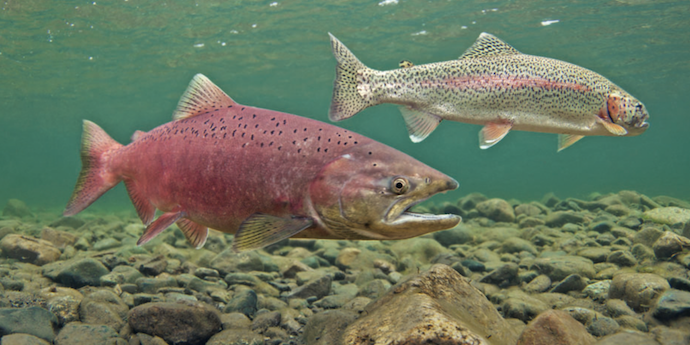
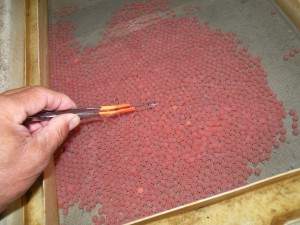
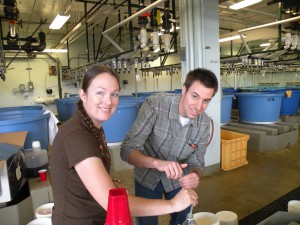
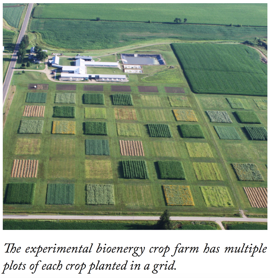
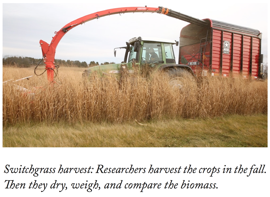
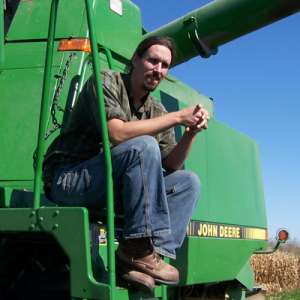
 This Data Nugget was adapted from a data analysis activity developed by the Great Lakes Bioenergy Research Center (GLBRC). For a more detailed version of this lesson plan, including a supplemental reading, biomass harvest video and extension activities,
This Data Nugget was adapted from a data analysis activity developed by the Great Lakes Bioenergy Research Center (GLBRC). For a more detailed version of this lesson plan, including a supplemental reading, biomass harvest video and extension activities, 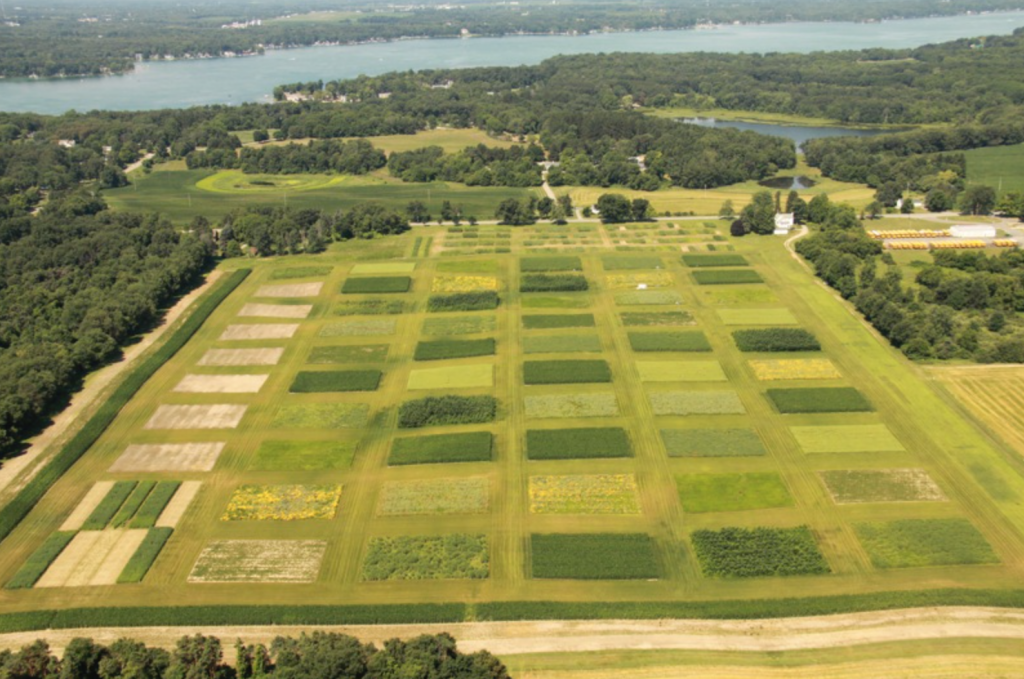

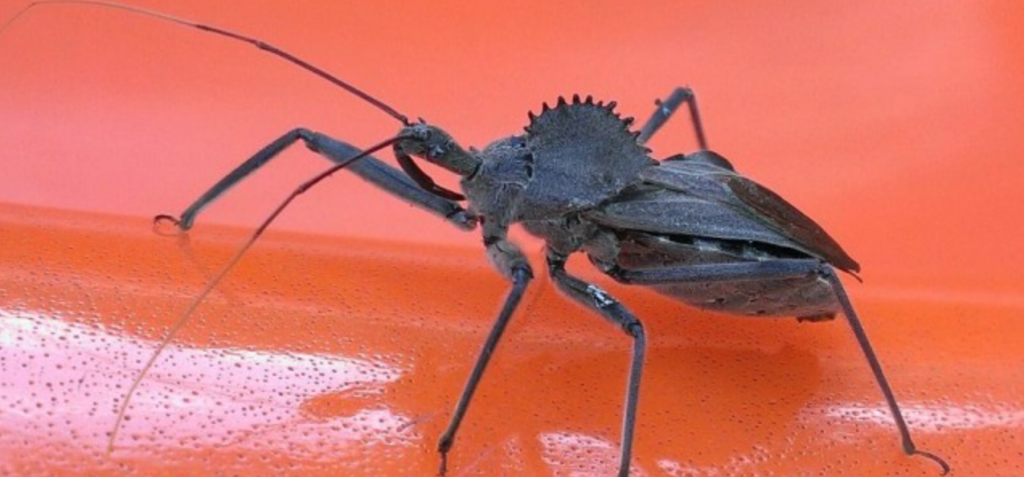




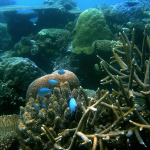


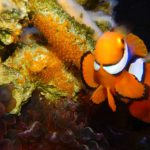
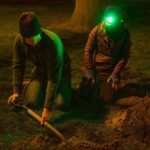
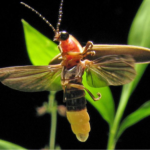
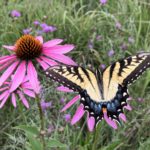
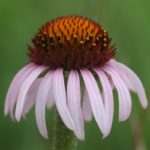


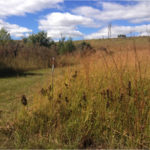
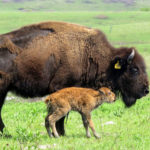
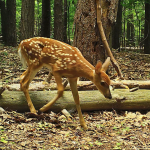
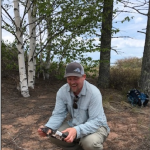




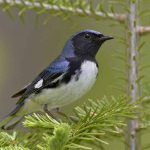
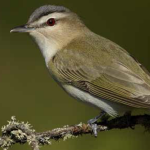

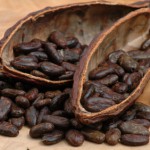
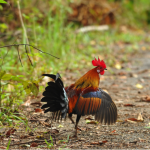
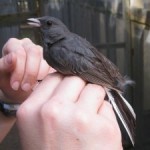
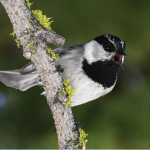
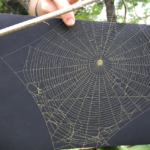
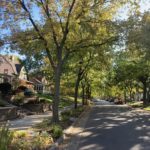
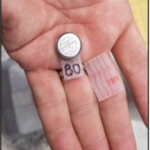
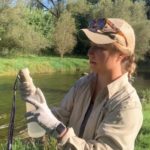
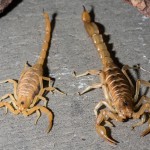
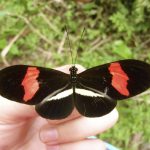
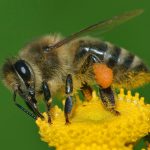

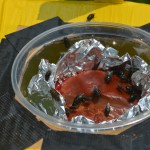
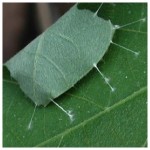

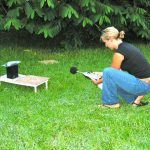

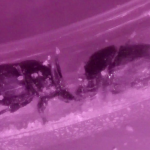
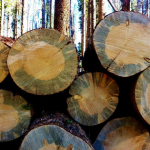
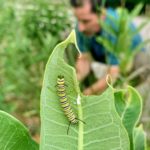

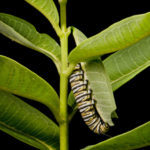

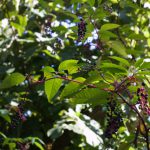
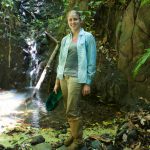

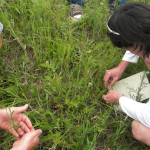
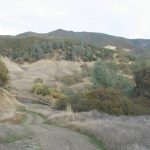
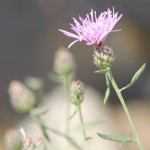

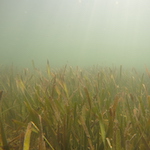


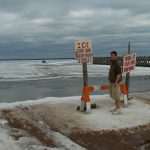

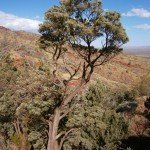

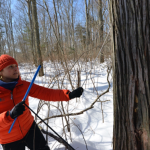
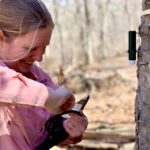

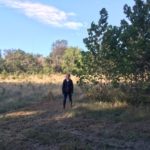
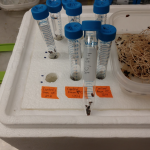

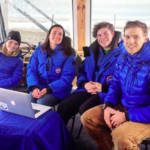
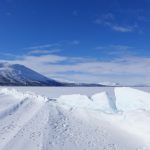

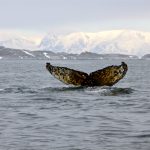
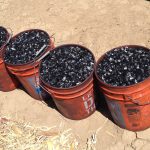
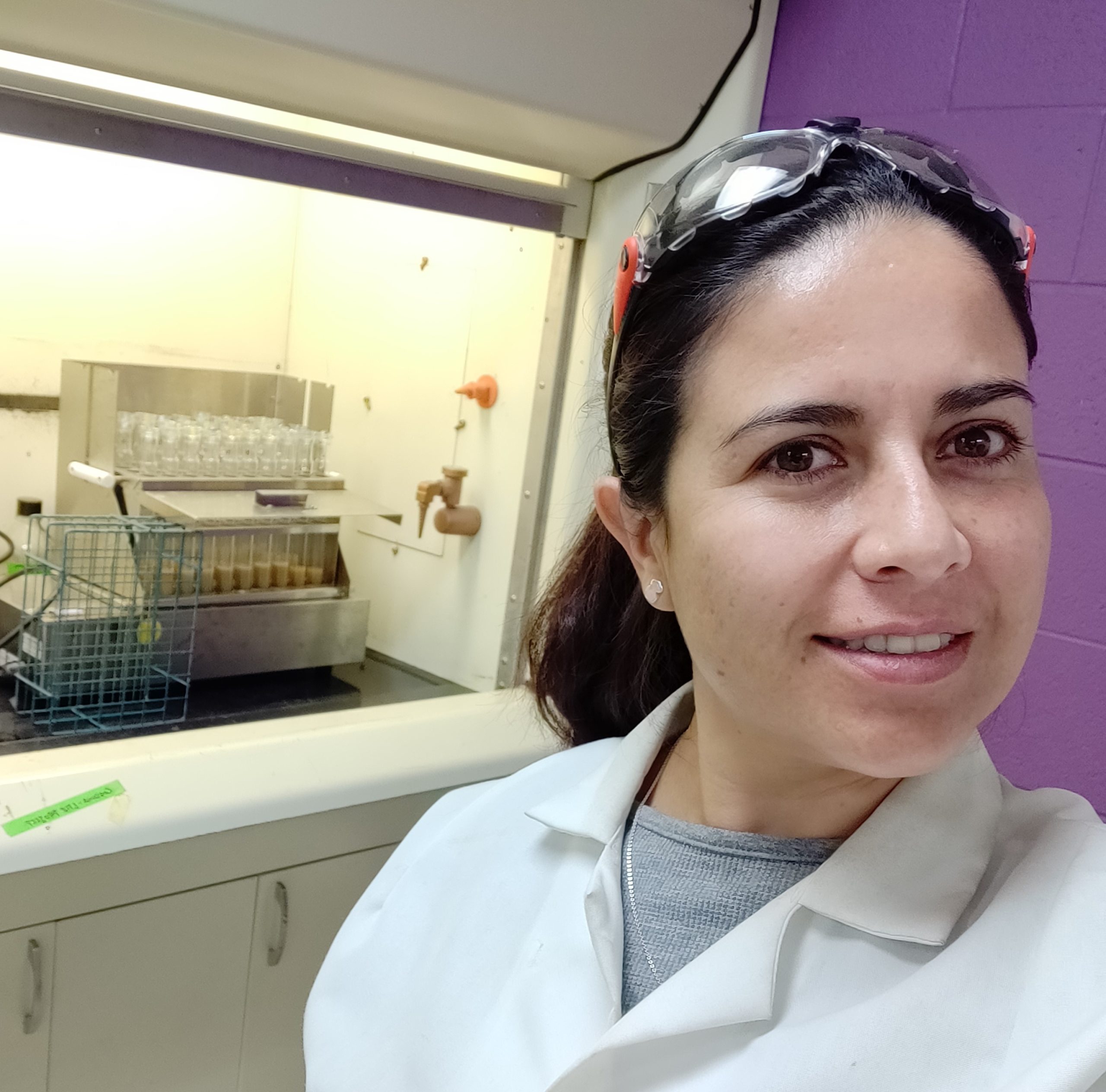
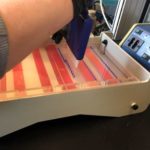
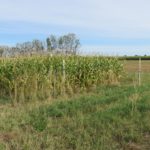








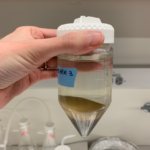
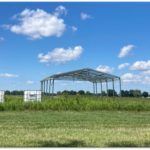

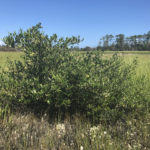
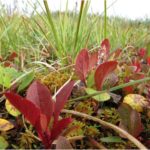
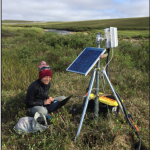
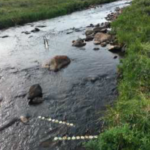
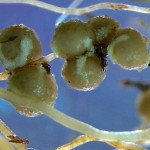
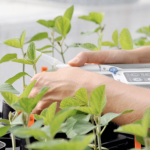

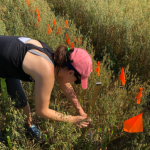


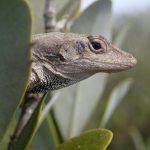

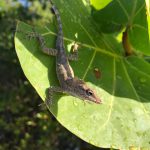

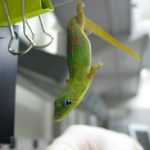

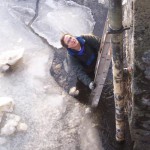
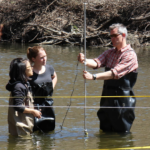
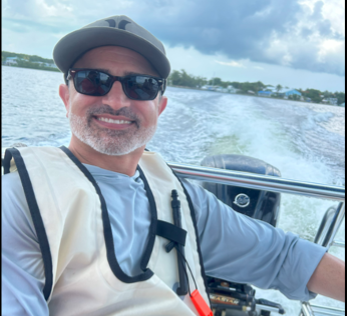
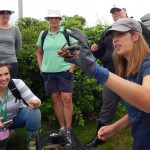
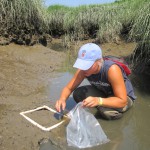



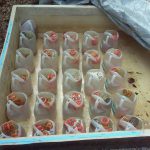
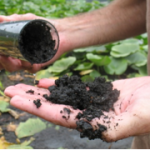
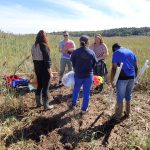

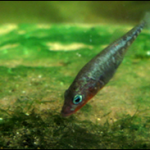
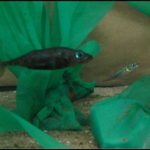
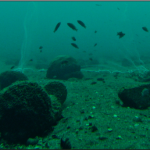
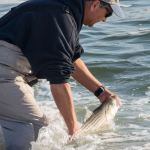
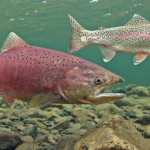
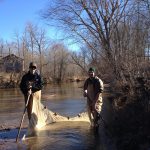
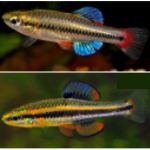
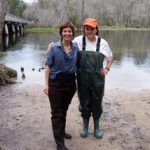
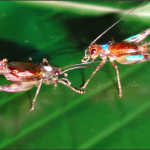





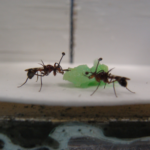
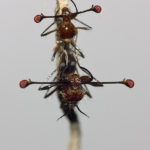

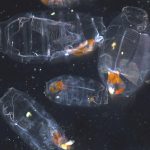

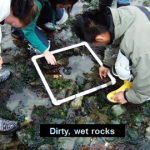
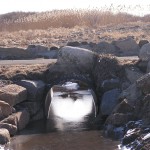
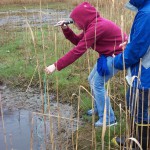
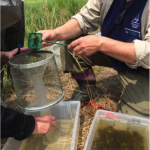

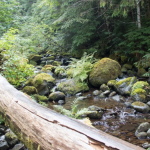
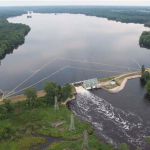


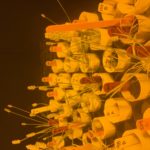
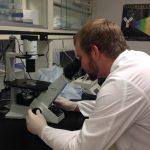
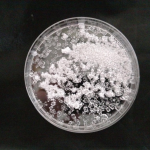
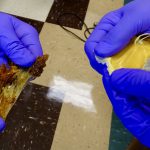
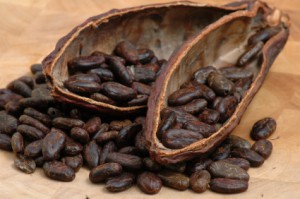

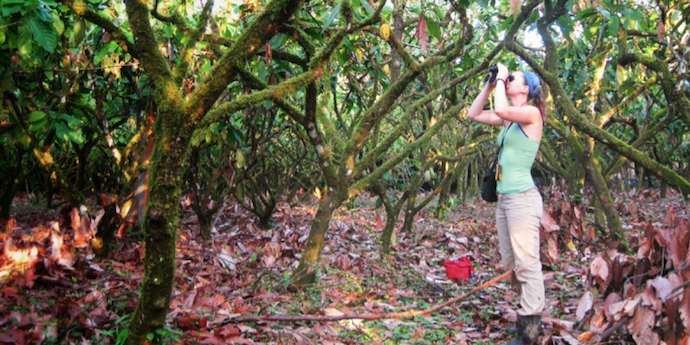
 About Skye: As a child Skye was always asking why; questioning the behavior, characteristics, and interactions of plants and animals around her. She spent her childhood reconstructing deer skeletons to understand how bones and joints functioned and creating endless mini-ecosystems in plastic bottles to watch how they changed over time. This love of discovery, observation, questioning, and experimentation led her to many technician jobs, independent research projects, and graduate research study at Purdue University. At Purdue she studies the factors influencing oak regeneration after ecologically based timber harvest and prescribed fire. While Skye’s primary focus is ecological research, she loves getting to leave the lab and bring science into classrooms to inspire the next generation of young scientists and encourage all students to be always asking why!
About Skye: As a child Skye was always asking why; questioning the behavior, characteristics, and interactions of plants and animals around her. She spent her childhood reconstructing deer skeletons to understand how bones and joints functioned and creating endless mini-ecosystems in plastic bottles to watch how they changed over time. This love of discovery, observation, questioning, and experimentation led her to many technician jobs, independent research projects, and graduate research study at Purdue University. At Purdue she studies the factors influencing oak regeneration after ecologically based timber harvest and prescribed fire. While Skye’s primary focus is ecological research, she loves getting to leave the lab and bring science into classrooms to inspire the next generation of young scientists and encourage all students to be always asking why!